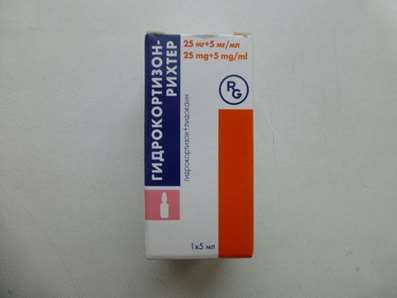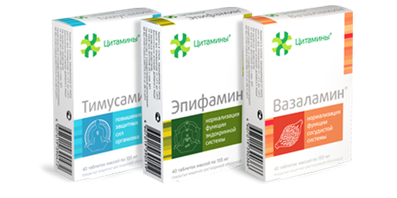Instruction for use: Nazol Kids
I want this, give me price
Trade name of the drug – Nazol® Kids
ATX code R01AA04 Phenylephrine
Pharmacotherapeutic group:
Decongestant agent - α-adrenoagonists [alpha agonists]
Decongestant agent - α-adrenoagonists [decongestant]
The nosological classification (ICD-10)
J00 Acute nasopharyngitis [runny nose]
Viral rhinitis, Inflammation of the nasopharynx, Inflammatory diseases of the nose, purulent rhinitis, Nasal congestion, Nasal congestion with colds and flu, The difficulty of nasal breathing, The difficulty of nasal breathing for colds, Difficulty in nasal breathing, Difficulty in nasal breathing in colds, nasal, hypersecretion, cold, ARI with rhinitis phenomena, coryza, Acute rhinitis of various origins, Acute rhinitis with thick purulent mucous exudate, Acute nasopharyngitis, Swelling of the mucosa of the nasopharynx, Rhinitis, rhinorrhea, Infectious-inflammatory diseases of ENT organs, heavy cold, rhinopharyngitis, nasopharyngitis
J01 Acute sinusitis
Inflammation of the sinuses, Inflammatory diseases of the paranasal sinuses, Purulent inflammation of the paranasal sinuses, Infectious-inflammatory diseases of ENT organs, Infection of the sinuses, Combined sinusitis, Exacerbation of sinusitis, Acute inflammation of the paranasal sinuses, Acute bacterial sinusitis, Acute sinusitis in adults, Subacute sinusitis, acute Sinusitis, sinusitis
J06 Acute upper respiratory infections of multiple and unspecified
Frequent colds viral diseases, Infections of the upper respiratory tract, Acute respiratory disease influenza character, for colds Pain, Acute colds,Cold, respiratory infection,Seasonal colds, Pain in infectious and inflammatory diseases of the upper respiratory tract, Bacterial infections of the upper respiratory tract, Bacterial respiratory infections, Viral disease of the respiratory tract, Viral respiratory tract infections, Inflammatory disease of the upper respiratory tract, Inflammation of the upper respiratory tract disease, Inflammation of the upper respiratory tract illness with difficult sputum, Inflammatory airway disease, Secondary infections with colds, Shortness of sputum in acute and chronic respiratory diseases, Upper respiratory tract infection, Infections of the upper respiratory tract, Respiratory Tract Infections, Infections of the respiratory tract and lungs, Infectious-inflammatory diseases of the upper respiratory tract, Infectious-inflammatory diseases of the upper respiratory tract and ENT-organs, Infectious-inflammatory diseases of the upper respiratory tract in children and adults, Infectious-inflammatory diseases of the upper respiratory tract, Infectious inflammation of the airways,respiratory infection, Qatar upper respiratory tract, Catarrh of the upper respiratory tract, Catarrhal disease of the upper respiratory tract, Catarrhal symptoms of the upper respiratory tract, Coughing with a cold, SARS, ARI, ARI with rhinitis phenomena, Acute respiratory infection, Acute infectious and inflammatory disease of the upper respiratory tract, Acute respiratory disease, Sore throat or nose, Respiratory viral infections, Respiratory diseases, Respiratory infections, Recurrent respiratory infections, Secondary infection with influenza, cold in the chest, Feverish condition with flu usitis, acute sinusitis, genyantritis, purulent sinusitis
J11 Influenza, virus not identified
Flu, Influenza in the early stages of the disease, Flu in children, cold in the chest, Begins flu-like condition, Acute disease parainfluenza, parainfluenza, parainfluenza state, influenza epidemics, The pains of the flu, Influenza
J30 Vasomotor and allergic rhinitis
Allergic rinopatiya, Allergic rhinosinusopathy, Allergic respiratory diseases, Allergic rhinitis, nasal allergy, Seasonal Allergic Rhinitis, Vasomotor rhinitis, Long-allergic rhinitis, Perennial allergic rhinitis, Perennial allergic rhinitis, Year-round or seasonal allergic rhinitis, Year-round allergic rhinitis nature, Rhinitis allergic vasomotor, Exacerbation of pollen allergy in the form of Syndrome rinokonyunktivalnogo, Acute allergic rhinitis, Edema of the nasal mucosa, Edema of the nasal mucosa, Swelling of the mucosa of the nasal cavity, Swelling of the nasal mucosa, Swelling of the nasal mucosa, pollen disease, Permanent allergic rhinitis, rhinoconjunctivitis, rhinosinusitis,rhinosinusopathy, Seasonal allergic rhinitis, Seasonal Allergic Rhinitis, Haymarket rhinitis, Chronic allergic rhinitis, Allergic respiratory diseases
J30.1 Allergic rhinitis caused by the pollen
hay fever, Hypersensitivity to pollen, Polypoid allergic rhinosinusitis, Seasonal hay fever, rhinitis
Composition
Nasal Spray (for children) 100ml
active substance:
phenylephrine hydrochloride 0.25 g
Excipients: Benzalkonium chloride - 0.018 g; eucalyptol (cineole) - 0.04 g; glycerol - 4 g; Macrogol 1500 - 1.5 g; sodium dihydrogen phosphate dihydrate - 0.226 g; Potassium dihydrogen phosphate - 0.101 g; edetate disodium dihydrate - 0.02 g; Purified water - 95.845 g
Description
Spray: clear solution colorless to light yellow in color, with a weak smell of eucalyptus.
Pharmacological Properties of Nazol KidsPharmachologic effect
vasoconstrictor
pharmacodynamics
The drug for symptomatic local treatment of rhinitis. Phenylephrine hydrochloride is an agonist of alpha 1-adrenergic receptors (sympathomimetic), providing vasoconstrictor effect due to stimulation of alpha 1 receptors in the nasal mucosa. Reduces swelling and mucosal tissue hyperemia, congestion in the nasal mucosa, and enhances the permeability of the nasal airway. Restoration of air permeability of the nasopharynx improve patient health and reduce the risk of possible complications caused by stagnation of mucous secretion.
Pharmacokinetics
When applied topically, systemic absorption is low.
Indications of Nazol® Kids
Symptomatic treatment: relief of breathing through the nose for colds, flu, hay fever or other allergic diseases of the upper respiratory tract, accompanied by acute rhinitis or sinusitis.
Contraindications
Increased individual sensitivity to the ingredients of the drug;
CVD (including the expressed atherosclerosis, angina pectoris, tachycardia);
thyroid disease (hyperthyroidism);
diabetes;
arterial hypertension;
simultaneous reception of MAO inhibitors (as well as 2 weeks after their withdrawal)
children's age (up to 4 years).
Precautions: children's age (up to 6 years).
Pregnancy and breast-feeding
Not recommended for use during pregnancy and lactation.
Side effects
Local reactions: burning sensation, tingling or tingling in the nose.
Systemic effects: headache, dizziness, palpitations, arrhythmia, increased blood pressure, sweating, pallor, tremor, insomnia.
Interaction
MAO inhibitors (procarbazine, selegiline), tricyclic antidepressants, maprotiline, guanedrel, guanethidine and enhance the pressor effect of phenylephrine arrhythmogenic (for systemic absorption).
When systemic absorption of phenylephrine thyroid hormones increase (each) associated with it the risk of coronary heart disease (especially in coronary atherosclerosis).
Dosage and Administration
Intranasal.
Children from 6 to 12 years old: 2-3 injections in each nostril not more often than every 4 hours.
The duration of treatment without consulting your doctor - no more than 3-5 days.
Overdose
Symptoms: cardiac rhythm disturbances, increased blood pressure, agitation. In case of overdose, seek medical advice.
Treatment: symptomatic.
special instructions
In children, systemic absorption of phenylephrine and its associated risk of side effects is higher than in adults.
The duration of use of the drug should not exceed 3 per day, while maintaining the complicated nasal breathing continued use of the drug should be discussed with your doctor.
Phenylephrine should not assign patients within 2 weeks after discontinuation of MAO inhibitors, because they may increase the severity of the adrenergic effects of sympathomimetic agents and increase the risk of side effects from the CCC.
It is not recommended to use the same vial more than one person in order to avoid the spread of infection.
Upon compression of the vial in an upright position it is released from the solution as a spray under compression vial upside down - dropwise.
Effects on ability to drive and use machines. No Information about the negative impact of the drug on the ability to drive a car or other vehicles. But with the appearance of symptoms of the side effects of the drug should refrain from driving and performing activities requiring concentration of attention or psychomotor reactions.
release Form
Nasal Spray (for children), 0.25%. PE vial with a screw-cap, 15, 30 ml. Spraying device encased in the upper tapered portion of the vial. Dome-shaped top cap of polypropylene, provided with a ring which protects the integrity of the package. On the front and back side of the bottle label pasted. The bottle in the carton box.
Storage conditions of Nazol Kids
The temperature is not higher than 25 ° C.
Keep out of the reach of children.
Shelf life of Nazol Kids
2 years.
Do not use beyond the expiration date printed on the package.
Available without prescription.

 Cart
Cart





